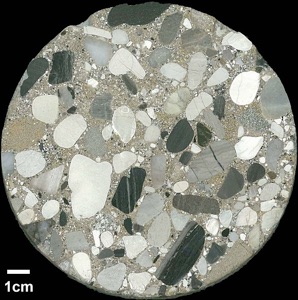2. Clastic Sedimentary Rocks


1. Lecture Notes:
To print more than 1 slide per page please see your printer set up for details.
Slides with extended notes: HERE - all this material is examinable.
Slides only: HERE
Slides only LARGE file size: HERE
2. Lecture Activity Solution: HERE
3. Required Reading:
Quartz - Micas, page 249 - 256
Mineral Composition, page 273 - 277
NOTE: text book readings are tested online and not exams with the exception of topic 5.
4. Additional Pre Lecture Material: HERE
This figure is a working hypothesis. It is an attempt to estimate (given two different source rocks) the potential sandstones that might be generated in this hypothetical landscape of rivers emerging from a number of highland sources. Study this diagram and try to understand how / why the lithological hypotheses have been erected. NOTE: this is a hypothesis a “model” other hypotheses may be equally valid until they are TESTED.
5. Lecture Goals
Note! Lecture goals are intended to help you understand the main themes in the lecture. They are NOT designed as a guide to the exact content that will appear in exams.
i. Define and categorize clastic sedimentary rocks
-
ii.Interpret clastic sedimentary rocks in terms of provenance and tectonic regime
-
iii. Interpret clastic sedimentary rocks in terms of their environment of deposition.
6. Sample Questions (answers given at the bottom of the page)
Note! These questions are drawn from individual lectures. Questions on the exams may draw their content from ACROSS lecture material and not focus on any one specific area as the questions do here.
-
1.Describe (using appropriate terminology) a sandstone that demonstrates both textural mineralogical maturity and suggest a possible environment of deposition.
-
2.Classify and interpret this rock and suggest one possible environment of deposition.
-
3.How can mudrocks be useful in correlating and dating sedimentary sequences?
1. A quartz arenite > 95% quartz. Well sorted, well rounded grains. Possible environments of deposition include deserts and beach deposits.
2. Polymict, clast supported conglomerate. Clasts are fairly well rounded. A possible environment could be a shoreline beach deposit.
3. Hemipelagic mudrocks commonly contain fossils that demonstrate a a wide global distribution making them useful for global correlation (example, Graptolites). In addition bentonites (altered volcanic ash) represent sudden (geologically instantaneous) events and often still contain material that can be dated radiometrically. As they are distributed through the atmosphere they also commonly demonstrate a wide geographical extent.

